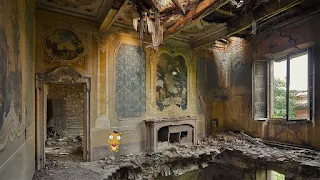The allure of historical wall tapestries, Since antiquity people have used textiles for all range of purposes. From blankets for warmth, to elaborate woven fabrics for commerce, they have been at the very center of human life.
The need for textiles, combined with our desire to enhance the world around us, has given rise to a huge range of fabric based art, everything from basic colored cloth to complex woven textiles. have long been one of the most accomplished forms of this art, having a history dating back millennia, and artists from almost all cultures have contributed some form of textile wall art.
Recently tapestries and wall hangings have enjoyed a rise in interest, with many people looking beyond traditional options for wall decor. The tactile nature of tapestries, combined with their rich history, has made them once again a choice for the well-informed home improver.
Traditional tapestry designs
Although there is an increasing amount of contemporary art available as tapestries, it is the traditional designs from the past that are the most popular. Since tapestries have enjoyed a long history these can include anything from Gothic wall hangings, to French Baroque and Rococo works from the 17th and 18th centuries, to more recent 19th century William Morris and Pre-Raphaelite art.
The main appeal of these impressive works is their connection with history. The range of designs and themes is vast and include subject matter as diverse as the rise and fall of nations, the importance of art movements at different times, and the prominence of individual artists and groups. Most appealing is that each has its own claim to history. This combination of artistic excellence and history writ large is proving irresistible to many art lovers who yearn for more depth in their home decor choices.
There are many famous tapestries from the past. In particular the middle ages took wall tapestries from the domain of practical decor into the realms of art. Boasting famous works like the Bayeux Tapestry and the Lady and the Unicorn series, the medieval era is seen by many as the golden age of tapestry art. More importantly for the first time we see tapestry wall hangings widely appreciated as works of art, rather than just practical pieces of home furnishing.
A growing popularity
Reproductions of these famous works are proving very popular with modern audiences. Given the historical importance of these works of art some of the current productions available are fastidious copies of the originals. The very best of these capture the drama and virtuosity of historical art, perfectly blending it with modern weaving methods. The end result is often very faithful to the original artists' vision, with all the durability and appeal of modern fabrics.
From the vivid colors of medieval tapestries, to the exoticism of Eastern schools of weaving, traditional tapestry designs often surprise modern art lovers with their attention to detail, their ability to capture emotion and their exploration of timeless themes such as love and romance.
An enduring allure
Because of this these centuries-old designs are enjoying a renewed prominence and are once again making their way into the homes of taste conscious art lovers. Every tapestry, because of the individuality of the weaving process, is a unique work of art unlike any other. In a world driven by mass production art and home decor enthusiasts are drawn to the uniqueness of wall tapestries as an antidote to the monotony of many other décor options.
Now, despite their ancient origins, many people are again looking towards as an answer to their modern home decor aspirations. With an ever growing range of options for shoppers the choice has never been better.
 Reviewed by Kebo Sukses
on
January 24, 2022
Rating:
Reviewed by Kebo Sukses
on
January 24, 2022
Rating:









No comments: